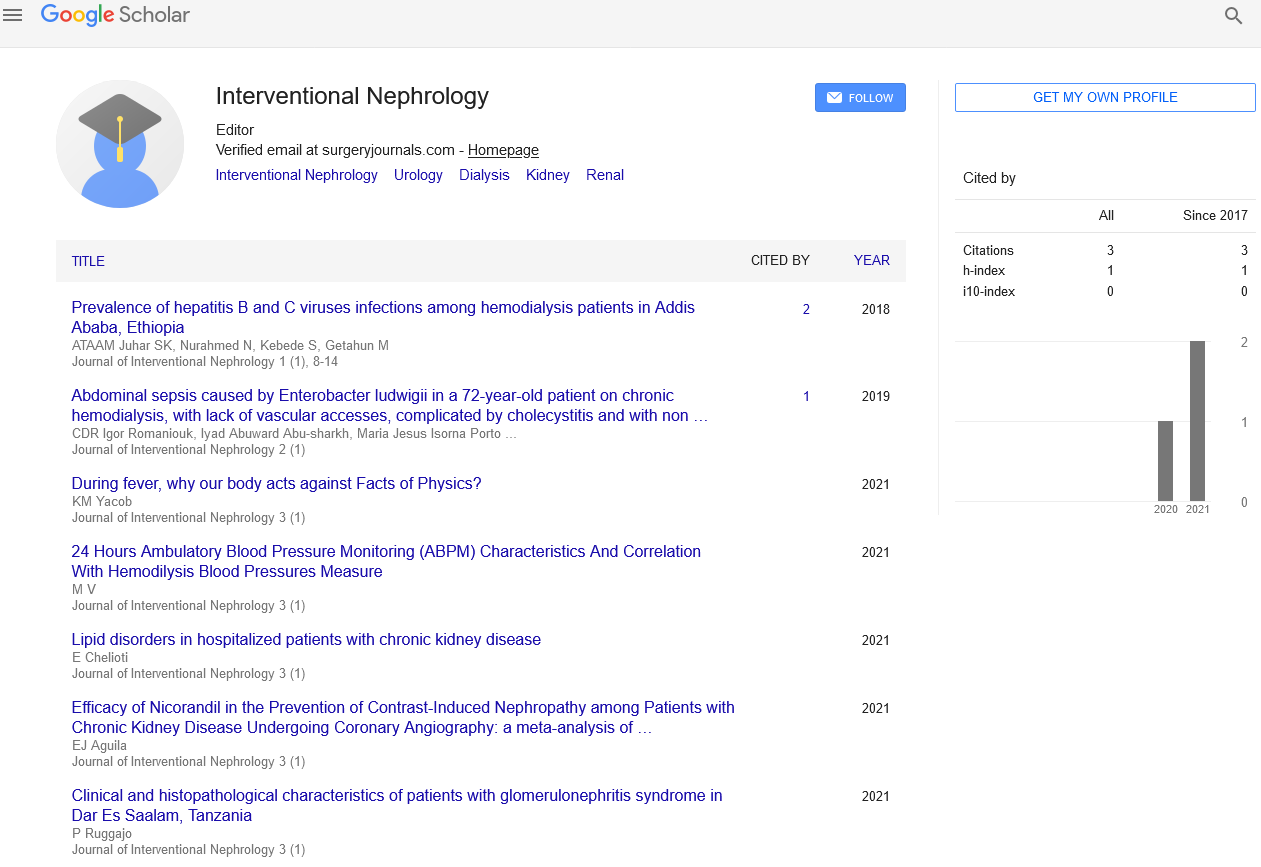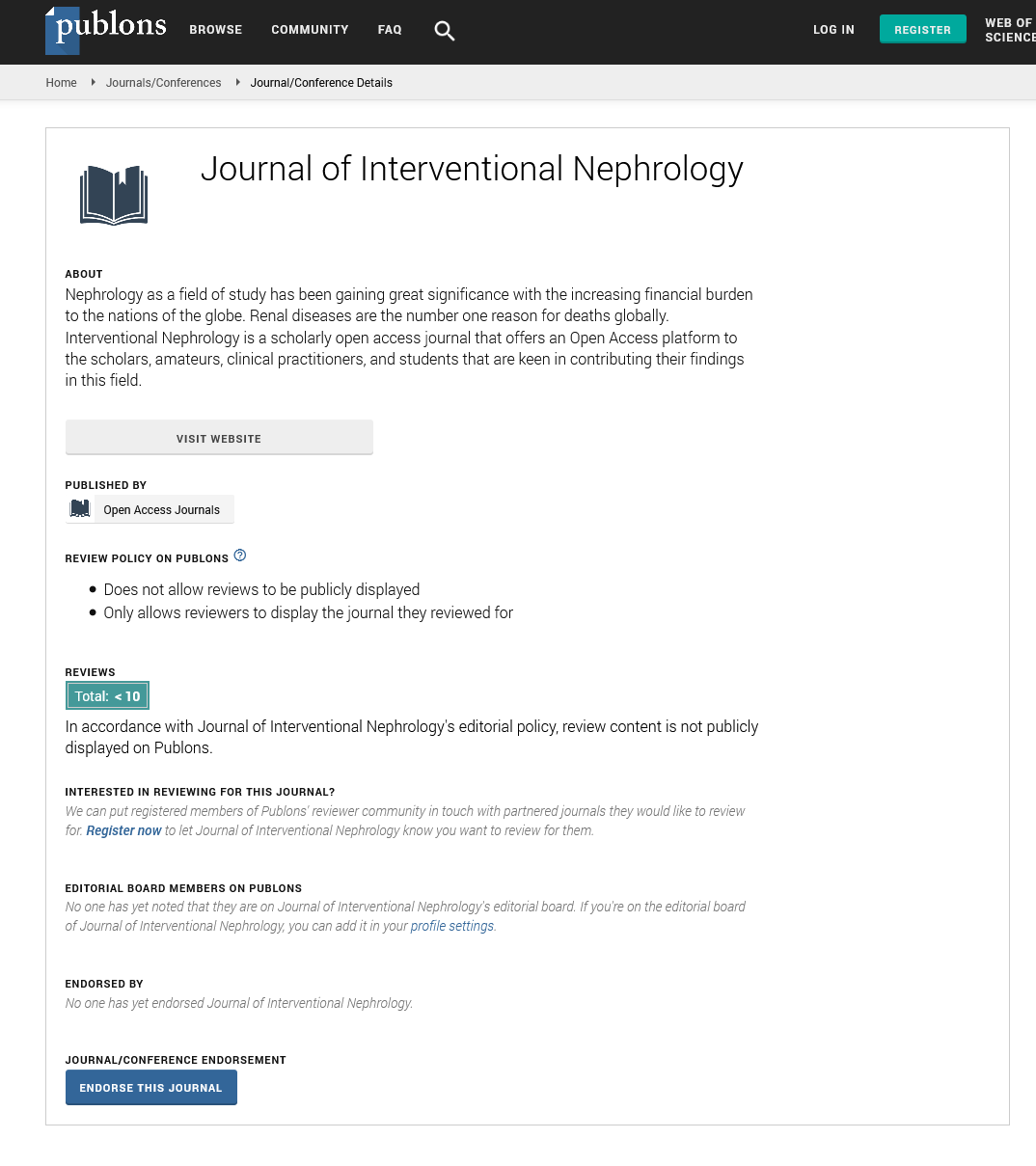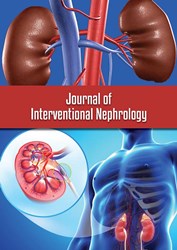Perspective - Journal of Interventional Nephrology (2024) Volume 7, Issue 2
Deciphering Renal Perfusion Pressure: Understanding Mechanisms, Regulation, and Clinical Implications
- Corresponding Author:
- Vikram Saha
Department of Nephrology,
MVN University,
Italy
E-mail: vikrams44364654@edu
Received: 20-Mar-2024, Manuscript No. OAIN-24-130174; Editor assigned: 22-Mar-2024, PreQC No. OAIN-24-130174 (PQ); Reviewed: 05-Apr-2024, QC No. OAIN-24- 130174; Revised: 12-Apr-2024, Manuscript No. OAIN-24-130174 (R); Published: 22-Apr-2024, DOI: 10.47532/oain.2024.7(2).242-243
Introduction
Renal perfusion pressure serves as a vital determinant of kidney function, playing a pivotal role in maintaining renal blood flow and Glomerular Filtration Rate (GFR). In this comprehensive article, we delve into the intricacies of renal perfusion pressure, elucidating its underlying mechanisms, regulatory pathways, and clinical significance in health and disease.
Understanding renal perfusion pressure
Renal perfusion pressure refers to the pressure gradient driving blood flow through the renal vasculature, ultimately influencing renal blood flow, glomerular filtration, and tubular function. It is defined as the difference between Mean Arterial Pressure (MAP) and Renal Venous Pressure (RVP), taking into account the resistance offered by the renal vasculature.
Description
Mechanisms of renal perfusion regulation
Several mechanisms contribute to the regulation of renal perfusion pressure, ensuring adequate blood flow to meet the metabolic demands of the kidneys:
Autoregulation: The kidneys possess intrinsic mechanisms, known as autoregulation, to maintain relatively constant renal blood flow and GFR over a wide range of systemic blood pressures. Autoregulation occurs primarily through the myogenic response and tubuloglomerular feedback mechanism.
Neurohumoral regulation: Neurohumoral factors, including the Renin-Angiotensin- Aldosterone System (RAAS), Sympathetic Nervous System (SNS), and natriuretic peptides, play crucial roles in modulating renal vascular tone and perfusion pressure. Activation of the RAAS and SNS leads to vasoconstriction of renal arterioles, thereby increasing renal vascular resistance and preserving perfusion pressure.
Extracellular fluid volume regulation: Changes in extracellular fluid volume, such as dehydration or volume overload, can impact renal perfusion pressure by altering systemic blood pressure and vascular tone. Hormonal mechanisms, such as the release of Antidiuretic Hormone (ADH) and aldosterone, help regulate extracellular fluid volume and maintain perfusion pressure.
Clinical implications of renal perfusion pressure
Acute Kidney Injury (AKI): Reductions in renal perfusion pressure, secondary to hypovolemia, hypotension, or renal artery stenosis, can precipitate AKI by impairing renal blood flow and GFR. Prompt recognition and management of factors contributing to reduced perfusion pressure are essential in preventing AKI and preserving renal function.
Chronic Kidney Disease (CKD): Prolonged reductions in renal perfusion pressure, as observed in conditions such as hypertension or atherosclerosis, can contribute to the progression of CKD by inducing renal hypoperfusion, ischemia, and subsequent renal injury. Targeting modifiable risk factors and optimizing blood pressure control are integral in slowing the progression of CKD.
Renal transplantation: Maintenance of adequate renal perfusion pressure is crucial in the setting of renal transplantation to ensure graft viability and function. Optimization of hemodynamic parameters and immunosuppressive therapy is paramount in preserving renal perfusion and preventing graft dysfunction.
Diagnostic evaluation of renal perfusion pressure
Assessing renal perfusion pressure involves measuring systemic blood pressure, renal blood flow, and GFR, along with evaluating factors contributing to alterations in perfusion pressure, such as hypovolemia, cardiac dysfunction, or renal artery stenosis. Non-invasive imaging modalities, such as Doppler ultrasonography or magnetic resonance angiography, may be utilized to assess renal vascular anatomy and function.
Therapeutic interventions
Management of alterations in renal perfusion pressure aims to restore adequate renal blood flow and GFR while addressing underlying etiologies contributing to perfusion deficits. Therapeutic strategies may include fluid resuscitation, vasopressor therapy, optimization of cardiac output, renal artery revascularization, or pharmacological interventions targeting neurohumoral pathways.
Conclusion
Renal perfusion pressure stands as a critical determinant of kidney function, influencing renal blood flow, GFR, and tubular function. Through a comprehensive understanding of the underlying mechanisms and regulatory pathways governing renal perfusion pressure, clinicians can effectively diagnose and manage alterations in perfusion dynamics, striving to preserve renal function and prevent associated complications in both acute and chronic renal conditions.


